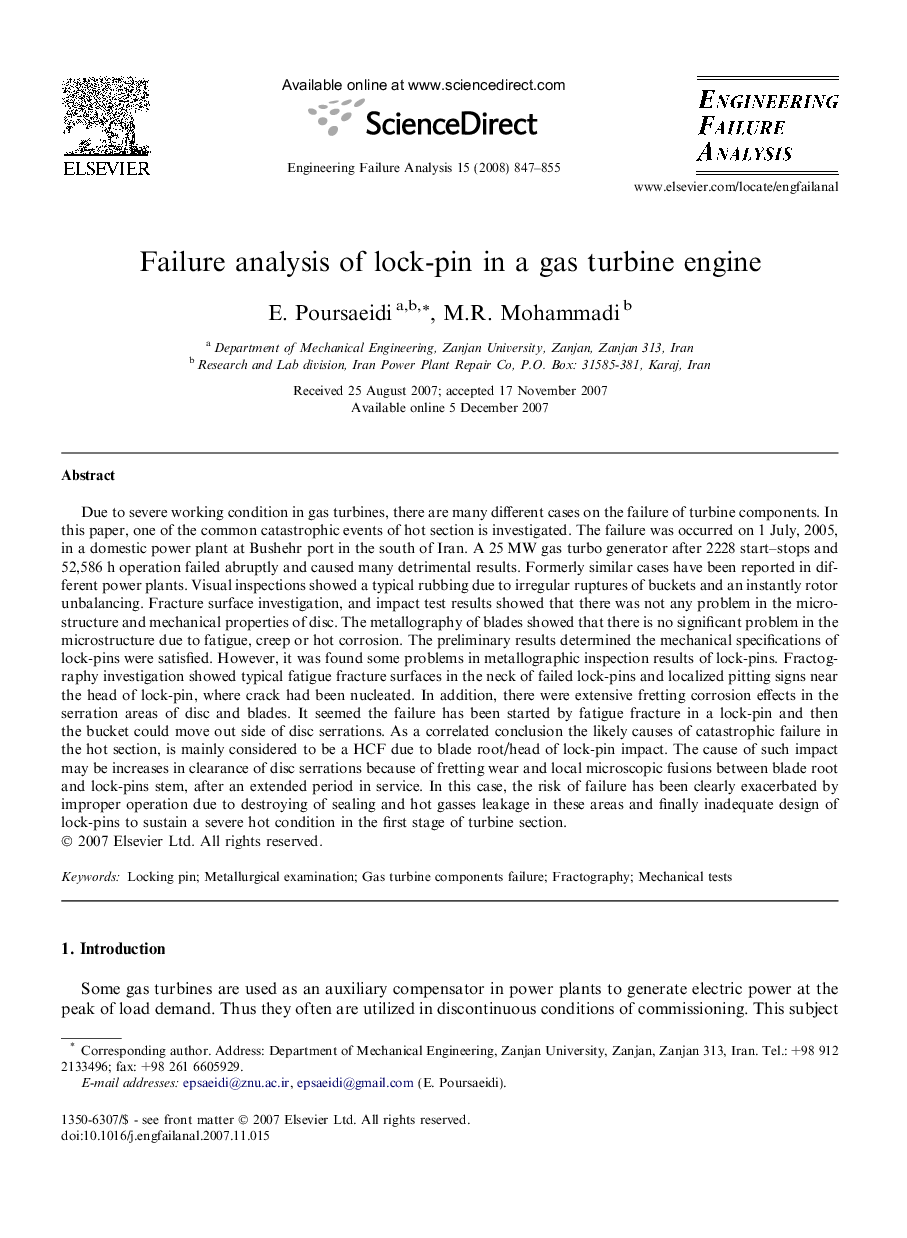| کد مقاله | کد نشریه | سال انتشار | مقاله انگلیسی | نسخه تمام متن |
|---|---|---|---|---|
| 769576 | 897400 | 2008 | 9 صفحه PDF | دانلود رایگان |

Due to severe working condition in gas turbines, there are many different cases on the failure of turbine components. In this paper, one of the common catastrophic events of hot section is investigated. The failure was occurred on 1 July, 2005, in a domestic power plant at Bushehr port in the south of Iran. A 25 MW gas turbo generator after 2228 start–stops and 52,586 h operation failed abruptly and caused many detrimental results. Formerly similar cases have been reported in different power plants. Visual inspections showed a typical rubbing due to irregular ruptures of buckets and an instantly rotor unbalancing. Fracture surface investigation, and impact test results showed that there was not any problem in the microstructure and mechanical properties of disc. The metallography of blades showed that there is no significant problem in the microstructure due to fatigue, creep or hot corrosion. The preliminary results determined the mechanical specifications of lock-pins were satisfied. However, it was found some problems in metallographic inspection results of lock-pins. Fractography investigation showed typical fatigue fracture surfaces in the neck of failed lock-pins and localized pitting signs near the head of lock-pin, where crack had been nucleated. In addition, there were extensive fretting corrosion effects in the serration areas of disc and blades. It seemed the failure has been started by fatigue fracture in a lock-pin and then the bucket could move out side of disc serrations. As a correlated conclusion the likely causes of catastrophic failure in the hot section, is mainly considered to be a HCF due to blade root/head of lock-pin impact. The cause of such impact may be increases in clearance of disc serrations because of fretting wear and local microscopic fusions between blade root and lock-pins stem, after an extended period in service. In this case, the risk of failure has been clearly exacerbated by improper operation due to destroying of sealing and hot gasses leakage in these areas and finally inadequate design of lock-pins to sustain a severe hot condition in the first stage of turbine section.
Journal: Engineering Failure Analysis - Volume 15, Issue 7, October 2008, Pages 847–855